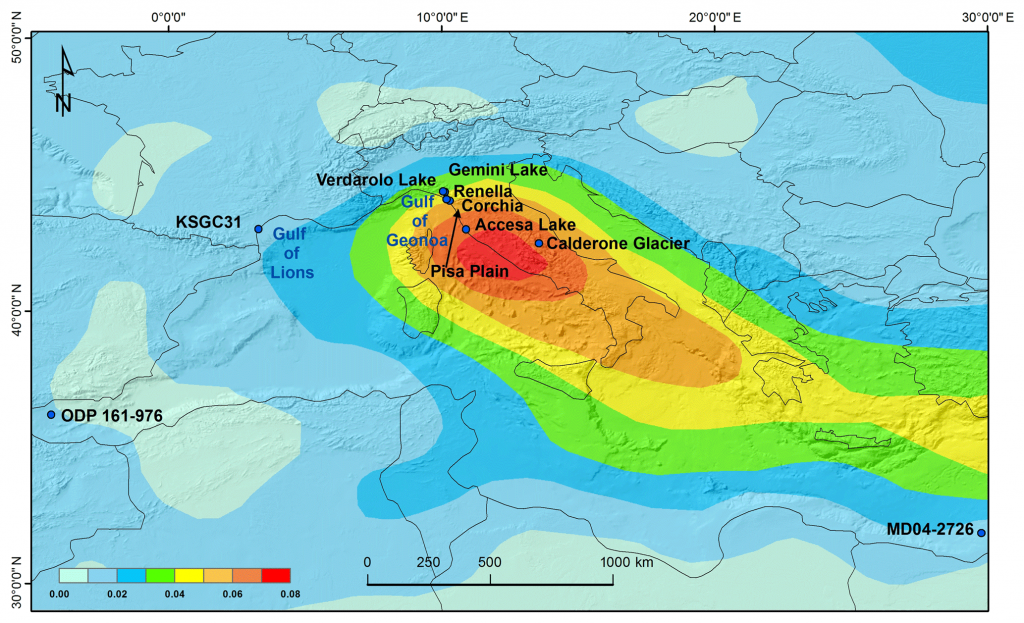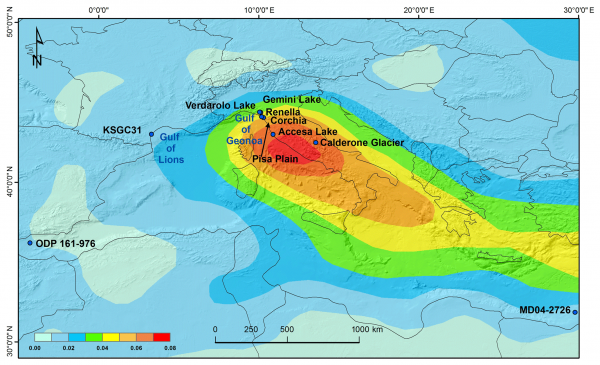The 4.2 ka event in the central Mediterranean: new data from a Corchia speleothem (Apuan Alps, central Italy)

Isola I., G. Zanchetta, R.N. Drysdale, E. Regattieri, M. Bini, P. Bajo, J.C. Hellstrom, I. Baneschi, P. Lionello, J. Woodhead, and A. Greig (2019).
Climate of the Past, 15, 135-151, https://doi.org/10.5194/cp-15-135-2019.
Abstract
e present new data on the 4.2 ka event in the central Mediterranean from Corchia Cave (Tuscany, central Italy) stalagmite CC27. The stalagmite was analyzed for stable isotopes (δ13C and δ18O) and trace elements (Mg, U, P, Y), with all proxies showing a coherent phase of reduced cave recharge between ca. 4.5 and 4.1 ka BP. Based on the current climatological data on cyclogenesis, the reduction in cave recharge is considered to be associated with the weakening of the cyclone center located in the Gulf of Genoa in response to reduced advection of air masses from the Atlantic during winter. These conditions, which closely resemble a positive North Atlantic Oscillation (NAO) type of configuration, are associated with cooler and wetter summers with reduced sea warming, which reduced the western Mediterranean evaporation during autumn–early winter, further reducing precipitation.



Devi effettuare l'accesso per postare un commento.